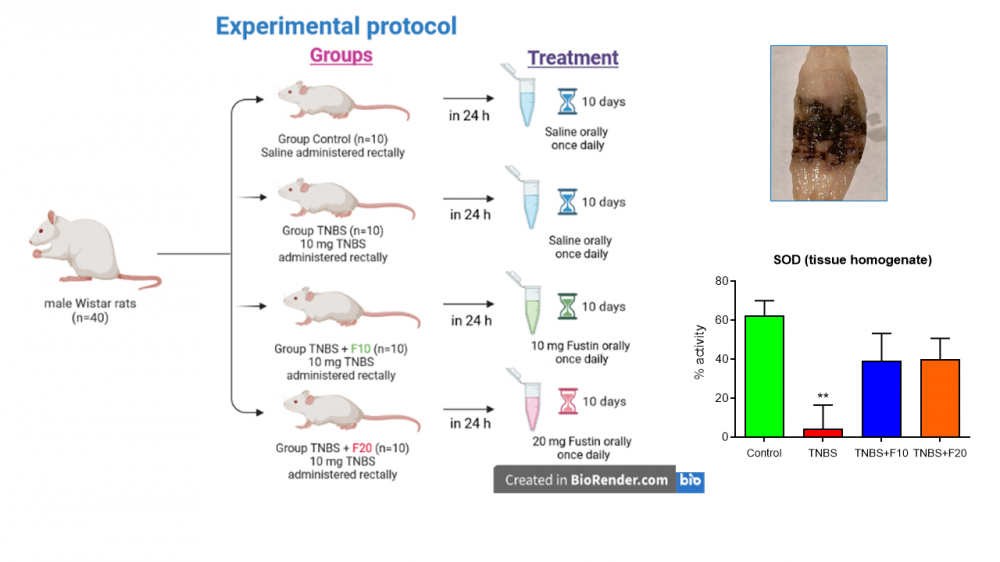JOURNAL 3097
Records of Agricultural and Food Chemistry
Year: 2024 Issue: 3 Special Issue: Abstracts 3rd. TCS, International Food Chemistry Congress February 29-March 03,2024 Antalya Türkiye
p.69 - 69
Viewed 1002 times.
-
Miglena Nikolova

-
Danail Pavlov

-
Miroslav Eftimov

-
Antoaneta Georgieva

-
Milena Salbashian

-
Mehmed Abtulov

-
Miroslav Novakovic

-
Vele Tešević

-
Stefka Valcheva-Kuzmanova

GRAPHICAL ABSTRACT

ABSTRACT
The food chemistry analyses, and preclinical in vivo tests are powerful assessment tools for developing innovative functional food products and therapeutic agents from natural sources. The Eurasian Smoketree (Cotinus coggygria Scop.) is a popular medicinal plant in the Balkan and Anatolian traditional medicine. Due to its high content of flavonoids with well documented in vitro antioxidant activity, it has a significant therapeutic potential in combating chronic diseases. The bioflavonoid fustin, present at high concentration in C. coggygria heartwood, is poorly studied. The aim of the present study was to explore the antioxidant effects of the bioflavonoid fustin, isolated from C. coggygria heartwood, in a rat model of trinitrobenzene sulfonic acid (TNBS)-induced colitis that mimics the signs and symptoms of inflammatory bowel disease. Fustin was isolated and purified from C. coggygria heartwood by silica gel column chromatography, reversed-phase semi-preparative high-performance liquid chromatography and by nuclear magnetic resonance spectroscopy. Forty male Wistar rats (weight 150-250 g) were used, allocated to four groups (n=10): Control, TNBS, TNBS+F10 and TNBS+F20. Colitis was induced by rectal application of TNBS following the procedure described by Morris et al. [1]. Oral treatment by an orogastric cannula was initiated 24 hours after colitis induction and lasted for 8 days. Fustin, at doses of 10 mg/kg and 20 mg/kg, prepared at a volume of 10 ml/kg as a suspension in distilled water and Tween 80, was administered to groups TNBS+F10 and TNBS+F20, respectively. Groups Control and TNBS received the vehicle at a volume of 10 ml/kg. On the 10th day of the experiment, 24 hours after the last treatment, the animals were sacrificed under diethyl ether anesthesia. Colon tissue with weight of 1 g was mixed with 10 mL 50 mM Tris/HCL buffer (pH=7.4) and was homogenized for 3-4 min at 3500 rpm. The homogenate was centrifuged at 4°C and 3000 rpm for 15 min. The supernatant was collected, and the activity of the endogenous antioxidant enzyme superoxide dismutase (SOD) was measured by colorimetric assay using the Superoxide Dismutase Activity Kit (Product No. 19160, Sigma-Aldrich) and multi-mode microplate reader (Synergy 2, BioTek Instruments, USA). Data were analyzed by GraphPad Prism 6 using One-way ANOVA, followed by Dunnett's multiple comparisons test. SOD activity results are given as Mean of its inhibition activity (%) ± standard error of the mean (SEM). The results showed that SOD activity was significantly reduced (p<0.01) in the TNBS group (4.44±12.20%) compared to that of the Control group (62.64±7.45%). The activities of SOD in TNBS+F10 group (39.41±13.96%) and TNBS+F20 group (40.10±10.77%) were not significantly different from the control value. In conclusion, Fustin treatment restored the colon activity of SOD in the experimental TNBS-induced colitis. This antioxidant effect of fustin might be a result of its ability to increase the intracellular antioxidant defense most probably by gene expression regulation.
KEYWORDS- Fustin
- antioxidant defense
- superoxide dismutase
- trinitrobenzene sulfonic acid
- colitis